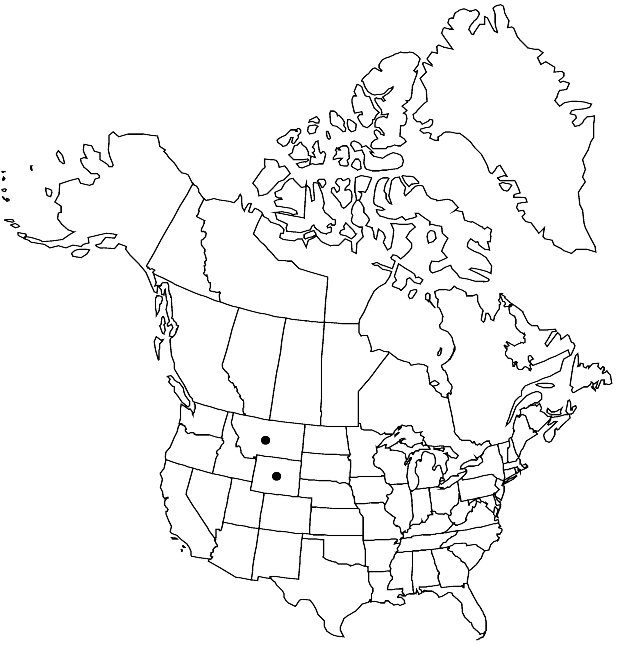Difference between revisions of "Physaria curvipes"
Novon 17: 183. 2007.
FNA>Volume Importer |
imported>Volume Importer |
||
| Line 53: | Line 53: | ||
|publication year=2007 | |publication year=2007 | ||
|special status= | |special status= | ||
| − | |source xml=https:// | + | |source xml=https://bibilujan@bitbucket.org/aafc-mbb/fna-data-curation.git/src/bb6b7e3a7de7d3b7888a1ad48c7fd8f5c722d8d6/coarse_grained_fna_xml/V7/V7_1037.xml |
|tribe=Brassicaceae tribe Physarieae | |tribe=Brassicaceae tribe Physarieae | ||
|genus=Physaria | |genus=Physaria | ||
Revision as of 23:51, 27 May 2020
Perennials; caudex simple; densely pubescent, trichomes (often wavy, closely appressed to blade surfaces), 4–5-rayed, rays furcate or bifurcate, slightly fused near base, (tuberculate throughout). Stems simple from base, loosely spreading, usually decumbent, (well exserted from basal leaves, often reddish purple), 0.8–2.4 dm. Basal leaves: blade (erect), spatulate to nearly rhombic, 2.5–5(–9) cm, (base gradually narrowed to petiole), margins entire, (flat). Cauline leaves: blade spatulate, similar to basal, margins entire. Racemes loose, (elongated, exceeding basal leaves). Fruiting pedicels (ascending, curved or sigmoid), 4–7 mm. Flowers: sepals (pale yellow), lingulate to spatulate, 3.5–4 mm; petals narrowly oblanceolate, 4–6 mm. Fruits ellipsoid, not inflated (strongly latiseptate, more so at apex), (3–)5–9 mm; valves pubescent, trichomes closely appressed to surface; ovules 4–8 per ovary; style 2.5–4.5 mm (never more than 1/2 fruit length). Seeds plump.
Phenology: Flowering Jun–Jul.
Habitat: Limestone outcrops
Elevation: 1600-2800 m
Discussion
Physaria curvipes is known from the Big Horn Mountains.
Selected References
None.
